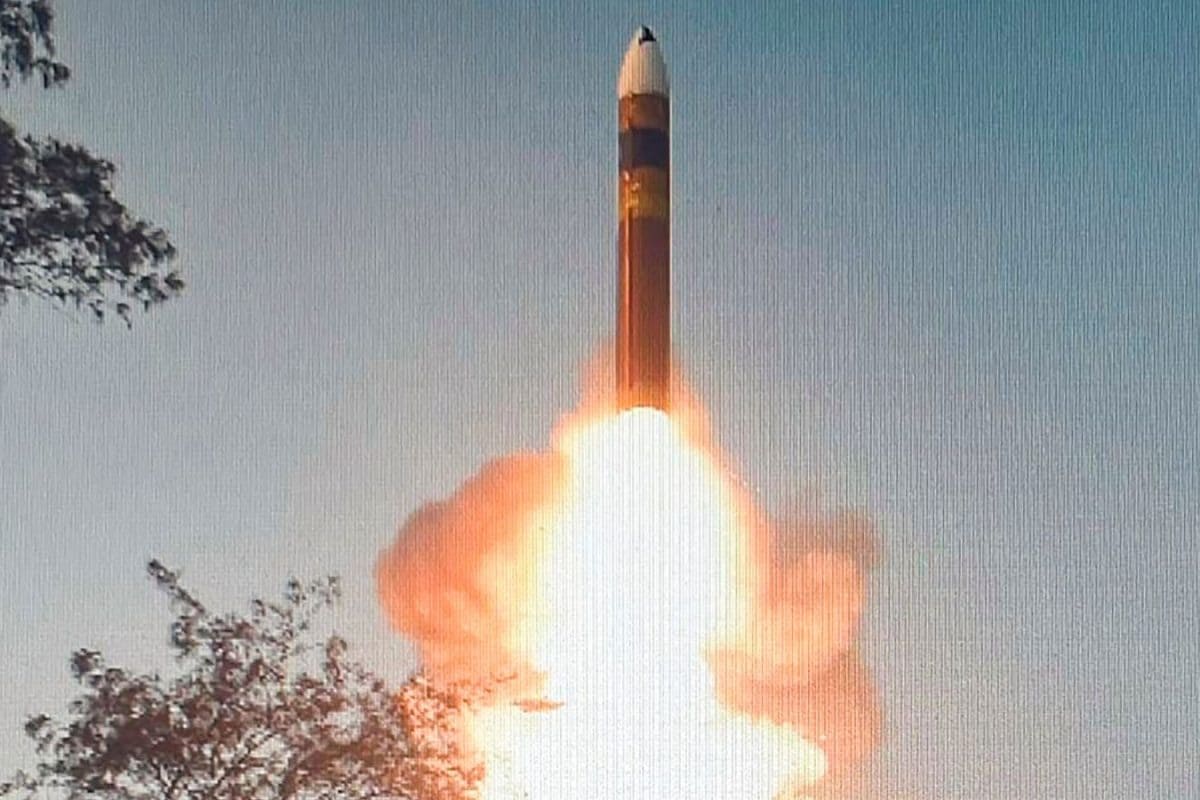

India has recently conducted a successful flight test of its Agni-5 intermediate-range ballistic missile, marking a significant leap in its strategic defense capabilities. The test, which took place at the Integrated Test Range in Chandipur, Odisha, was supervised by the Strategic Forces Command and validated all operational and technical parameters. This achievement reinforces India's position as a rising strategic power in Asia and strengthens its nuclear deterrence against regional adversaries.
The Agni-5 is a nuclear-capable missile with a range of over 5,000 kilometers, capable of reaching any part of China. Its advanced technology and reach address India's security concerns amid escalating border tensions and send a strong deterrent signal. The missile's development is a product of the Defence Research and Development Organisation (DRDO) and aligns with the "Atmanirbhar Bharat" initiative, demonstrating India's ability to indigenously develop advanced strategic weapons.
A key feature of the Agni-5 is its Multiple Independently Targetable Re-entry Vehicle (MIRV) technology. This allows the missile to carry between two and ten nuclear warheads, each capable of hitting separate targets. This MIRV capability significantly complicates enemy missile defense interception and enhances the missile's strategic effectiveness. India first validated the MIRV technology in the "Mission Divyastra" test in March 2024.
The Agni-5's guidance system integrates a Ring Laser Gyroscope (RLG)-INS with GPS and India's NavIC satellite navigation, providing exceptional targeting accuracy. The missile also incorporates decoys and penetration aids to enhance its ability to overcome advanced missile defense systems. Its three-stage solid-fuel propulsion ensures rapid launch readiness and survivability, while its canisterized road-mobile configuration offers flexibility, concealment, and long-term storage capability.
The Agni-5 missile significantly strengthens India's nuclear triad, complementing land-based systems, nuclear-powered ballistic missile submarines (SSBNs), and air-delivered platforms. It provides a credible second-strike capability, which is crucial for nuclear deterrence. The missile's range covers the entire Chinese mainland, including strategic hubs like Beijing and Shanghai, and also reaches strategic locations in the Middle East and parts of Europe.
The successful test of Agni-5 has broader implications for regional and global security. It allows India's defense to make a single missile hit multiple targets simultaneously. Some experts believe that with future variants exceeding 8,000 km range, India could potentially target cities as far as Washington, Moscow and Beijing. While India maintains a "No First Use" doctrine, committing to use nuclear weapons only in retaliation, the Agni-5 enhances its strategic autonomy and ensures deterrence stability in an increasingly polarized world. The Agni missile program, initiated four decades ago, remains a cornerstone of India's nuclear security architecture and a symbol of its technological self-reliance. The missile is expected to be fully operationalized and integrated into India's Strategic Forces Command within the next two years.